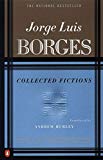
The Library of Babel is a surrealist story set in a world made up of interlocking hexagons where humans have only rudimentary supplies except for books full of what the world's librarians presume to be random combinations of a set group of symbols. This means that most books are useless gibberish, but the librarians have not given up hope of finding the supposedly inevitable books containing useful information and coherent narratives.
The story repeats the theme of Borges' 1939 essay "The Total Library" ("La biblioteca total"), which in turn acknowledges the earlier development of this theme by Kurd Lasswitz in his 1901 story "The Universal Library" ("Die Universalbibliothek"):
Certain examples that Aristotle attributes to Democritus and Leucippus clearly prefigure it, but its belated inventor is Gustav Theodor Fechner, and its first exponent, Kurd Lasswitz. [...] In his book The Race with the Tortoise (Berlin, 1919), Dr Theodor Wolff suggests that it is a derivation from, or a parody of, Ramón Llull's thinking machine [...T]he elements of his game are the universal orthographic symbols, not the words of a language [...] Lasswitz arrives at twenty-five symbols (twenty-two letters, the space, the period, the comma), whose recombinations and repetitions encompass everything possible to express in all languages. The totality of such variations would form a Total Library of astronomical size. Lasswitz urges mankind to construct that inhuman library, which chance would organize and which would eliminate intelligence. (Wolff's The Race with the Tortoise expounds the execution and the dimensions of that impossible enterprise.)
Many of Borges' signature motifs are featured in the story, including infinity, reality, cabalistic reasoning, and labyrinths. The concept of the library is often compared to Borel's dactylographic monkey theorem. There is no reference to monkeys or typewriters in "The Library of Babel", although Borges had mentioned that analogy in "The Total Library": "[A] half-dozen monkeys provided with typewriters would, in a few eternities, produce all the books in the British Museum." In this story, the closest equivalent is the line, "A blasphemous sect suggested [...] that all men should juggle letters and symbols until they constructed, by an improbable gift of chance, these canonical books."
Borges would examine a similar idea in his 1975 story, "The Book of Sand" in which there is an infinite book (or book with an indefinite number of pages) rather than an infinite library. Moreover, the story's Book of Sand is said to be written in an unknown alphabet and its content is not obviously random. In The Library of Babel, Borges interpolates Italian mathematician Bonaventura Cavalieri's suggestion that any solid body could be conceptualized as the superimposition of an infinite number of planes.
The concept of the library is also overtly analogous to the view of the universe as a sphere having its center everywhere and its circumference nowhere. The mathematician and philosopher Blaise Pascal employed this metaphor, and in an earlier essay Borges noted that Pascal's manuscript called the sphere effroyable, or "frightful".
In any case, a library containing all possible books, arranged at random, might as well be a library containing zero books, as any true information would be buried in, and rendered indistinguishable from, all possible forms of false information; the experience of opening to any page of any of the library's books has been simulated by websites which create screenfuls of random letters.
The quote at the beginning of the story, "By this art you may contemplate the variation of the twenty-three letters," is from Robert Burton's 1621 The Anatomy of Melancholy .
Already have an account? Log In Now